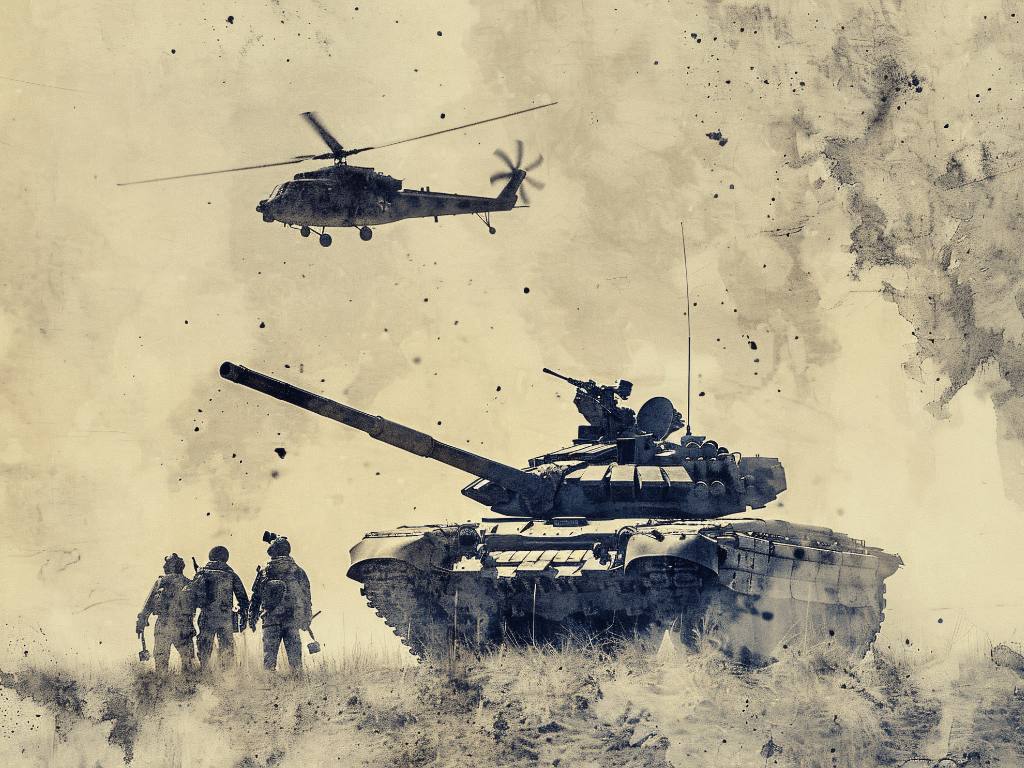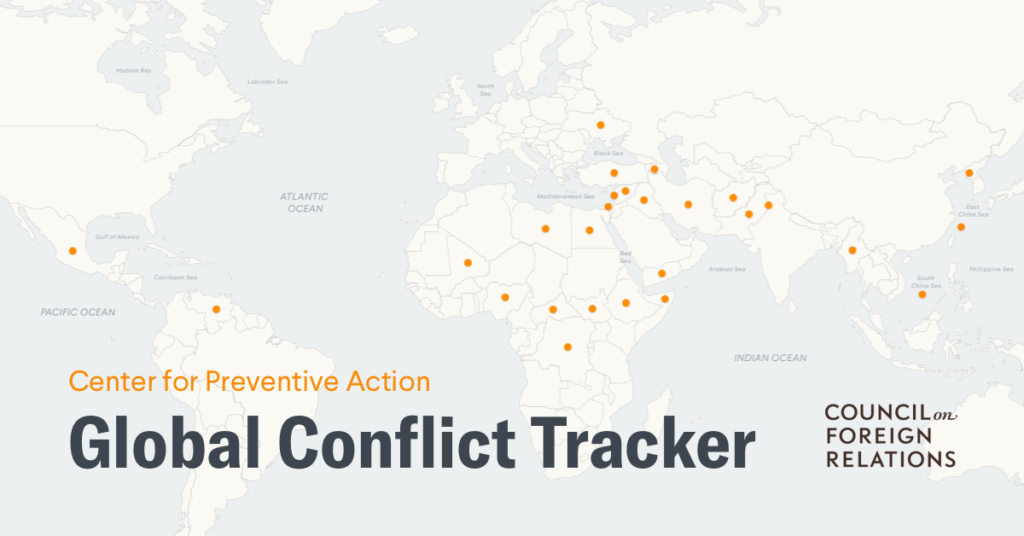As we enter 2024, some parts of the world may see new or ongoing conflicts. In this article, “Conflicts to Watch in 2024, ” we will discuss these critical spots.
Knowing about these can help everyone, from world leaders to regular folks like you and me.
Some conflicts are old and still going on, while others are new and beginning to cause worry. We chose topics based on their size, the people involved, and global importance.
Let’s get started and learn more about these conflicts. We’ll use simple words and many details. They will help you understand what’s happening and what might happen next.
Table of Contents
Methodology for Choosing Conflicts to Watch

When we decide which conflicts to focus on for 2024, we have a unique way of picking them. We look at three main things:
- How big is the conflict? We check how many people it affects and how severe it is.
- Who is involved? We examine whether countries, large groups, or influential leaders are part of the conflict.
- Why is it essential globally? We see if the conflict can affect other parts of the world or necessary resources, like oil.
We use expert reports, reliable news, and information from global peace watchdogs. They help us focus on the most important conflicts. They could make a real difference in the world.
We aim to give you precise, helpful info about potential global problems in 2024 by focusing on these points. This way, everyone can better understand what’s at stake.
Ongoing Conflicts from Previous Years
In 2024, many conflicts we’ve seen before are still causing trouble worldwide. We must understand these conflicts. They affect many people and can impact global peace.
Middle East
- Syria: The conflict in Syria has been going on for years and is still a significant issue. Many countries are involved, and it affects a lot of people.
- Yemen: This is another long conflict that significantly impacts its people. Several countries have tried to help, but the fighting continues.
- Iran: Tensions in Iran have grown, especially with other countries nearby. This affects the whole region and could lead to more significant problems.
Africa
- Sahel Region:
- Mali and Burkina Faso face ongoing fights with groups seeking control. This region struggles with violence, and its people suffer a great deal.
- Ethiopia: The fighting in Ethiopia has caused a humanitarian crisis. Many people have had to leave their homes.
- Libya has remained unstable since rebels overthrew its leader years ago. Different groups still fight for power.
Asia
- North Korea: The situation here is agitated, mainly because of its nuclear program. Other countries are watching closely.
- South China Sea: Many Asian countries argue over who owns parts of this sea. This could lead to more serious conflicts.
- Afghanistan: Even after many years of foreign troops being there, Afghanistan faces a lot of internal conflict.
Europe
- Ukraine: The conflict in Ukraine has seen changes with international involvement. It remains a critical issue in Europe.
- Balkans: Old tensions in places like Bosnia and Kosovo still exist and could worsen.
Americas
- Venezuela: Venezuela’s political and economic problems have caused significant conflicts.
- Central America: Countries like Guatemala and Honduras face violence from gangs, affecting many lives.
These conflicts are not about the countries in which they happen. They can affect global markets, security, and international relationships. It’s essential to watch them because changes here can impact the whole world.
Check reliable sources like BBC News and Al Jazeera for conflict updates. They report on global conflicts and provide up-to-date information.
Based on trends and expert analyses, here are the Top 10 Conflicts 2024, or the top 10 conflicts to watch in 2024 or the Top 10 Conflicts in 2024. Sources include the Council on Foreign Relations and the International Rescue Committee.
- United States Political Polarization and Violence: The 2024 presidential election may spark terrorism and political violence in the U.S.
- Israel-Hamas Conflict: The conflict between Israel and Hamas could start a regional war. It might involve other Palestinian areas and neighboring states, such as Lebanon and Syria.
- Central American Migration Crisis: Honduras, Guatemala, and El Salvador have crime, corruption, and poverty. These may drive a surge in migration to the U.S. southwest border.
- Sudan’s Internal Conflict: The war between the Sudanese Armed Forces and the Rapid Support Forces has made Sudan unstable. It has also caused humanitarian crises.
- Somalia’s Humanitarian Crisis: A prolonged drought and unstable government cause severe food shortages and displacement. Ongoing military actions against al-Shabaab make things worse.
- Mali’s Security Crisis: After U.N. peacekeepers withdrew, violence in Mali rose. Armed groups are responsible. The country now faces major humanitarian challenges.
- Myanmar’s Armed Conflict: Clashes between the military government and armed groups are harming and displacing civilians. Natural disasters caused by climate change are worsening the situation.
- Niger’s Instability: Extremist groups like Boko Haram and foreign militaries have caused violence. This has displaced millions.
- Ukraine Conflict with Russia: The war in Ukraine, worsened by tensions with Russia, affects global security.
- South China Sea Tensions: The South China Sea has territorial and sovereignty disputes. They involve several nations and risk larger conflicts.
These conflicts mix ongoing disputes and potential flashpoints. They could affect regional and global stability in 2024. Conflicts to Watch in 2024.
For more detailed information and updates, sources like the Council on Foreign Relations and the International Rescue Committee offer comprehensive analyses and reports on these situations.
Emerging Conflicts to Watch in 2024

As we look ahead, new conflicts are emerging that deserve our attention. These conflicts may be in the news later. But they could escalate and threaten global stability. Understanding these emerging threats is crucial for preparing and possibly preventing further escalation.
Criteria for Emerging Conflicts
We define “emerging conflicts” as those that have started recently or are likely to erupt soon. These conflicts usually involve:
- New political tensions: Changes in government or leadership disputes can lead to instability.
- Economic pressures: Struggles over resources like water, oil, or land can ignite conflicts.
- Social movements: Large-scale protests and demands for change can escalate into broader conflicts.
Potential Flashpoints in 2024
- Climate Change Disputes: As resources become scarce, countries might fight over water and land. Areas like the Nile Basin and the Arctic are at high risk.
- Technological Tensions: The race for tech dominance, especially in AI and cybersecurity, could spark conflicts between leading tech nations.
- Economic Crises: Countries with debt or financial problems may face conflicts. Internal or external pressures could cause these conflicts.
Areas to Watch
- Latin America: Economic instability and political changes may cause conflicts in Brazil and Argentina.
- Sub-Saharan Africa: Issues like land disputes and ethnic tensions could escalate conflicts in regions not previously affected.
- Eastern Europe: As NATO and Russia continue their tug of war, smaller countries caught in between may experience new tensions.
These emerging conflicts must be carefully monitored. Knowing their roots and causes, global leaders might reduce tensions. This could prevent more significant problems.
Use the International Crisis Group and the Institute for Economics and Peace for conflict analysis. They provide detailed reports on emerging conflicts.
Their websites have their studies and reports. They offer insights into global conflict trends and forecasts.
This section explores potential new conflicts in 2024. It focuses on the causes and identifies the regions most likely affected.
Technological and Cyber Conflicts

In 2024, tech and cyber skills are shaping economies. They are also becoming battlegrounds. As countries and companies invest in digital infrastructure, cyber conflicts may arise. Understanding these modern warfare arenas is crucial for global security.
Rise of Cyber Warfare
Cyberwarfare is a country’s use of digital attacks to disrupt another’s vital activities. The goal is to damage its communications, economy, or national security. Examples include:
- They are hacking government systems to steal sensitive information.
- They are attacking critical infrastructure, like power grids, hospitals, and water systems.
- You are spreading misinformation to influence public opinion and political outcomes.
Countries at High Risk
- United States and China: Both nations are heavily involved in defensive and offensive cybe.
- Russia: Known for its sophisticated cyber capabilities, Russia has been implicated in various cyber incidents around the world.
- Israel and Iran: These countries have a history of cyber engagements as part of their ongoing regional conflict.
Vulnerable Sectors
- Healthcare: Hospitals and health systems are increasingly targeted due to the critical nature and sensitivity of their data.
- Financial Services: Banks and financial institutions are prime targets for cyberattacks aiming at financial gain or economic disruption.
- Public Sector: Government agencies hold vast amounts of personal and sensitive data, making them attractive targets.
Technology has a profound impact on conflict. It changes how we fight, report, and resolve wars. The world must focus on cybersecurity. We need to invest in strong digital defenses. We must cooperate on an international level to manage these risks.
For deep analysis and real-time monitoring of cyber threats, check CISA and the International Cyber Policy Center for updates. They provide tips to guard against cyber threats. They also advise on what to do if a digital attack occurs.
This section addresses the critical issue of cyber conflicts, highlighting the nations involved, the sectors at risk, and the implications for global security.
Global Responses and Resolutions to Conflicts
As we enter 2024, we need global responses to conflicts more than ever. We must understand international organizations, diplomacy, and peace talks. They are key to a safer world.
Role of International Organizations
- United Nations (UN): The UN plays a central role in mediating conflicts through its Security Council and various peacekeeping missions. It aims to foster international cooperation to resolve disputes peacefully.
- North Atlantic Treaty Organization (NATO): While primarily a military alliance, NATO also engages in diplomatic efforts to stabilize regions and prevent conflicts, particularly in Europe and its surrounding areas.
- Regional Bodies: Organizations like the African Union and ASEAN work within their respective regions to address local conflicts, often providing platforms for dialogue and peace negotiations.
Diplomatic Efforts and Peace Talks
- Case Studies of Successful Resolutions: Examples include the Good Friday Agreement in Northern Ireland and the peace process in Colombia. These examples show how sustained diplomatic efforts and inclusive dialogue can lead to lasting peace.
- Challenges: Despite successes, many diplomatic efforts face obstacles such as a lack of trust, external interference, or internal political pressures that can derail peace processes.
Global Power Shifts
- Emerging Powers: Nations like China and India are increasingly influential in international diplomacy, offering new dynamics to conflict resolution efforts.
- Shifts in Alliances: As global alliances and priorities shift, so too do the approaches to managing and resolving conflicts. These changes can lead to new strategies or revive old tensions.
The effectiveness of these global responses is vital for the stability and peace of conflict-ridden regions. By supporting and understanding these efforts, the world can better navigate modern conflicts.
For updates on global peace efforts, check the International Peace Institute and the Stockholm International Peace Research Institute. They provide data on these key issues.
This section shows that global responses and diplomacy are key to resolving conflicts.
How to Stay Informed About Global Conflicts

In 2024, it’s vital to stay updated on global conflicts. This is key for those interested in world affairs, policymaking, or peacekeeping. Here are some tips and resources. They will help you stay informed about the latest in global conflicts.
Reliable Sources for Conflict News
- Major News Networks: Outlets like BBC World News, CNN International, and Al Jazeera provide comprehensive coverage of international conflicts. They often have correspondents on the ground to give updates as events unfold.
- Specialized Journals and Websites: Publications like Foreign Policy, International Crisis Group, and Jane’s Defense Weekly offer in-depth analysis and expert opinions on conflict-related issues.
Using Technology to Stay Updated
- News Aggregators: Apps like Google News, Feedly, and Flipboard can help you track specific topics or regions by aggregating news from various sources in real time.
- Social Media: Platforms like Twitter and LinkedIn are useful for real-time updates. Following reputable journalists, analysts, and official entities can provide firsthand accounts and expert insights.
Critical Analysis of Conflict News
- Check Multiple Sources: Always cross-check information from several reliable sources to get a well-rounded view of any conflict.
- Understand the Bias: recognize the perspective and potential biases of the sources. This awareness can help you interpret the information more accurately.
- Engage with Experts: Participating in webinars, forums, or lectures on international relations can provide deeper insights and facilitate a better understanding of complex conflicts.
Staying informed means more than following the news. It also means engaging with content in a critical manner. Tools like the Reuters Institute for the Study of Journalism offer guidelines. They are for assessing news credibility. Courses on international relations and media literacy are on Coursera. They can help you understand them better.
This section gives tips on staying informed about global conflicts. It suggests various tools and methods for accurate, comprehensive coverage.
FAQ Section: Understanding Global Conflicts in 2024
As we face global conflicts in 2024, we must address some common questions. This FAQ aims to clarify key points and provide clear answers. It should enhance understanding.
- What are the main types of conflicts to watch for in 2024?
- Ongoing conflicts: These include long-standing issues in places like Syria and Yemen.
- Emerging Conflicts: New disputes arising from economic pressures, social movements, or political changes.
- Technological and Cyber Conflicts: Disputes arising from advancements in technology and cyberattacks. Conflicts to Watch in 2024.
- Why is it important to understand global conflicts?
- Understanding conflicts helps predict their impacts on global stability and the economy. It also informs humanitarian efforts and international policies aimed at conflict resolution.
- How can international organizations influence conflict resolution?
- Organizations like the UN and NATO mediate disputes. They use diplomacy, sanctions, and sometimes military intervention. Their goal is to stabilize regions and prevent conflicts from escalating.
- What resources are available for staying informed about global conflicts?
- Reliable sources include BBC World News, CNN, and Foreign Policy. Also, they include real-time updates from news aggregators and social media.
- How do economic conditions influence conflicts?
- Economic instability can cause resource conflicts, social unrest, and political manipulation. These issues can escalate into larger disputes. Conflicts to Watch in 2024.
- What role does technology play in modern conflicts?
- Technology affects conflicts through cyber warfare, surveillance, and advanced weapons. It is now key to national security strategies. Conflicts to Watch in 2024.
- How effective are peace talks and diplomatic efforts in resolving conflicts?
- Peace talks can succeed. But their success often depends on three things. First, the parties’ willingness to compromise. Second, the involvement of powerful mediators. Third, sustained international support.
We hope to clarify the 2024 global conflict dynamics by answering these FAQs. This knowledge is crucial for those involved in policy-making, peacekeeping, or world affairs.
This FAQ section answers common questions about global conflicts. It provides simple answers within the context of the broader article. Conflicts to Watch in 2024.
Conclusion: Reflecting on Global Conflicts in 2024
As we finish our look at Conflicts to Watch in 2024, the world is complex and volatile. It’s not enough to know the conflict zones. We must also grasp the conflicts’ global impacts on stability, security, and welfare.
Key Takeaways
- Persistence of Old Conflicts: Regions like Syria, Yemen, and Ukraine continue to face challenges despite years of international attention and efforts.
- Rise of New Threats: New areas of concern include cyber warfare and technological disputes, which represent the next frontier in global conflict.
- Importance of Diplomacy: Effective diplomacy and international cooperation are critical in mitigating these conflicts, emphasizing the role of global and regional organizations.
Looking Ahead
The landscape of global conflicts is ever-changing. It’s vital for anyone in policy-making or humanitarian work to stay engaged with these issues. This includes anyone with a vested interest in global peace.
As we watch these conflicts, we should aim to foster dialogue and understanding. We seek resolutions that result in lasting peace.
For updates, stay connected to credible news sources and think tanks. The UN and peacekeepers provide vital updates for anyone tracking these events. This article, “Conflicts to Watch in 2024,” discusses them.
As we enter 2024, global conflicts will affect millions and shape international relations. Here’s a brief look at some of the key situations around the world: Global Hotspots.
- United States Political Polarization 2024: As the presidential election nears, the U.S. faces deep political divides. This polarization is a domestic issue. It also affects international relationships and policies.
- Israel-Hamas Conflict 2024: Tensions between Israel and Hamas are high. An escalation could affect Israel, the Palestinian territories, and the wider Middle East.
- Central American Migration Crisis: Central America’s economic hardship, violence, and instability are causing a crisis. Many are fleeing to the U.S. for refuge and better opportunities. This is straining immigration systems and border policies.
- Sudan Internal Conflict: Sudan faces internal strife. Political instability and military clashes create a volatile environment that undermines peace efforts.
- Somalia Humanitarian Crisis: Somalia faces a severe humanitarian crisis. Drought, conflict, and weak government cause widespread suffering and displacement.
- Mali Security Crisis: The withdrawal of international peacekeepers has worsened security in Mali. Conflicts between government forces and rebels disrupt lives and hinder aid.
- Myanmar Armed Conflict: Myanmar is in conflict. Military forces clash with ethnic armed groups. Civilians suffer the most, causing a major humanitarian crisis.
- Niger Instability: Niger struggles with instability. It faces threats from extremist groups and challenges from hosting refugees. These issues compound the region’s security challenges.
- Ukraine Russia Conflict: The Ukraine-Russia conflict draws global attention and concern. It has major effects on regional security and international law.
- South China Sea Tensions: Territorial and sovereignty disputes in the South China Sea involve several nations. They could escalate into larger conflicts, affecting global shipping and international relations.
